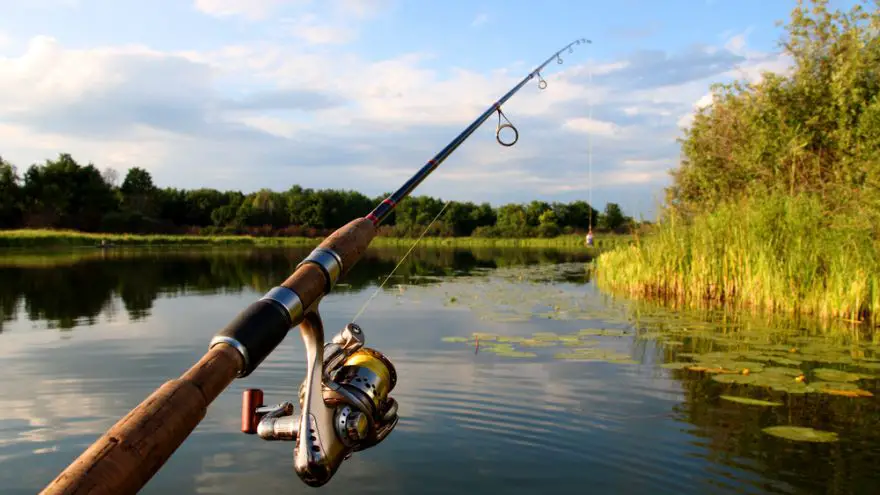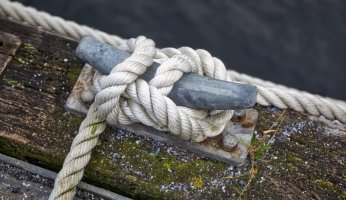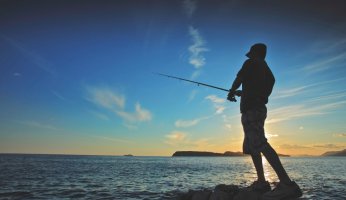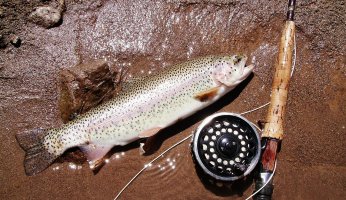Spin Rod Fishing for Trout
 Spin Rod Fishing for Trout
gearweare.net
Spin Rod Fishing for Trout
gearweare.net
It seems like every year I use my ultralight spinning gear more and more. I am a bit out of practice with the fly rod so it is really my only option for trout. I even use this gear for crappie or bass. I find that I can feel even the slightest movement on my line, and I can more easily tell the difference between a nibble and a strike. It is also much more fun to bring in fish on an ultralight versus a heavier pole.

However, there are several tactics that will need to be implemented for this gear to work well for you. In this article I am going to cover the most important strategies to make sure that you hook plenty of trout, and that your trout comes to net when using your ultralight gear.
Table of Contents
Be adventurous
Many of the rivers and streams that I fish for trout get heavy traffic. Trout are smart, visual fish and will stay hidden if they see activity above the surface of the water. Thankfully most anglers are lazy. There are always a few good spots that require a little more effort to hit with your lure. Do not be afraid to wade a little deeper, head upstream a little further, or tromp through thicker brush to get to that perfect spot. You will likely catch more fish and bigger fish.
Strike indicators are your friend
Because the best strategy is casting upstream, it is often hard to feel action on your line as it drifts downstream. If a trout strikes your lure or bait and the hook is not immediately set, it could easily spit out your hook and move on. To avoid this problem you can slide a 2-inch sleeve of brightly colored fly line onto your spinning line about 3 feet above the lure or bait. This line will float above your hook, and the bright line will show you any movement that you might not feel.

Know the difference between stocked and wild trout
When selecting your bait or lure, understand that stocked trout will eat about anything while native trout are much more selective. Depending on the water you are fishing, you may have luck catching stocked trout on corn kernels, salmon eggs, Powerbait, dough balls, and cheese. On the other hand, native trout would never strike on these baits. For these trout you need to have live bait such as minnows, crayfish, or worms. You can also use lures that imitate these natural food sources.
Keep it small
Trout are picky about what they eat and have great eyesight. They can easily detect a fake. They also can spot your hook if you are not careful. If you are using a lure, keep it as small as possible. If you use worms, use just one small worm versus a mound of large ones. If you use Powerbait, just use a small nugget. Also keep your hooks small and easy to hide. A number 14 may seem too small, but it is just about perfect for trout.

Pick your moments
While trout fishing can be good any time of the day, there are special moments when your odds are better. Just after dawn and just before dusk are ideal times to catch trout. The light is limited and the fish cannot see you or your lure as clearly. Just before a storm the barometric pressure is lower allowing the stomach of the fish to expand. This makes them feel hungrier, so target them just before a storm. Heavy rains wash additional food into the stream or river, so just after a heavy rain is another good time for catching trout.
Do not forget about lures
Many people only use jigs, crankbaits, and spoons on crappie and bass. However, these lures can work wonders on trout if you make one big adjustment. Buy the smallest ones you can find. If you scale down your lures to an ideal size for trout, you will catch both native and stocked fish.
Keep your bait moving
One of the reasons that trout readily strike on live bait is the movement they see. However, old or dead bait loses that movement. Keep your worms in moss lined boxes, minnows in a live well, and crickets in a cage. Change out your bait on a regular basis to keep it constantly moving.

Rig weights for easy release
When fishing for trout you often have to work the bottom or work around rocks or trees. To get to the bottom you likely will have to add a split shot. However, just pinching it above your lure leaves the potential for a snag to snap off the lure and split shot. Instead, leave about one foot of line sticking out after you tie on your lure. Then pinch your weight onto the end of that extra line. If you get snagged, the split shot will slip off leaving your lure safely on the line.
Watch your visibility
Trout have their eyes on the sides of their head giving them a wide range of vision. However, they cannot see directly behind them. Always use thinner line that is harder for the fish too see. In addition, start downstream from the fish and cast upstream. Trout face upstream so they will not be able to see you as you approach from directly behind them.













